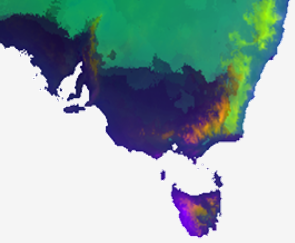My research interests lie in evolutionary genomics and understanding the proximate mechanisms that facilitate adaptation. I am broadly interested in genetic diversity, and how both sequence and structural variation respond to different neutral and selective processes. I have worked extensively with invasive species systems, which provide a powerful lens to examine the stochastic nature of evolutionary change and the emergence of rapid adaptation. These systems reveal how various forms of genomic variation, shaped by both adaptive and neutral forces, evolve following a species’ introduction into a non-native range.
A key focus of my work is on large-scale genomic changes, particularly structural variants and transposable elements. I investigate their functional impacts and how their roles in adaptation may differ from more commonly studied forms of variation, such as SNPs.
By applying these insights to native species, my goal is to advance our understanding of genome-wide variation and help bridge the gap between evolutionary genomics and meaningful conservation outcomes.
The invasion genomics of the European starling
The European starling Sturnus vulgaris, is one of the most widespread and iconic invasive avian species. However, despite their invasive range success, native starling populations are collapsing, with declines of up to 90% in the European countries they occupy. The global spread of this invasive species also provides unique opportunities to contrast genetic divergence across multiple invasive ranges, providing insight into the malleability of invasion regimes. I have worked across reduced representation sequencing (Stuart & Cardilini et al 2020), whole genome resequencing (Hofmeister et al 2021, Stuart et al 2023), museomics (Stuart et al 2022a), and morphological data (Stuart et al 2022b) to investigate the genetic underpinnings of the starling’s adaptive patterns across their global range, with a particular emphasis on the Australian population.

Genome Assembly and Annotation
Interpreting results surround adaptive selection is in part based on the genomic tools available for the analysis.
 To improve our ability to map future genetic read data, assembling high quality genomes is essential. I have assembled the genome of Sturnus vulgaris (Stuart & Edwards et al 2022) and Acridotheres tristis (forthcoming) as part of broader work on these species. I am generally interested in genome assembly, and the affects assembly choices may have on our ability to examine population structure, and identify adaptive changes.
To improve our ability to map future genetic read data, assembling high quality genomes is essential. I have assembled the genome of Sturnus vulgaris (Stuart & Edwards et al 2022) and Acridotheres tristis (forthcoming) as part of broader work on these species. I am generally interested in genome assembly, and the affects assembly choices may have on our ability to examine population structure, and identify adaptive changes.
Beyond outliers: Using genetic outliers to investigate broader evolutionary hypotheses.
Evolutionary genomic studies often produce a list of genetic sites flagged as under putative selection or associated with phenotype or environment data.
 While generating a shortlist of biologically interesting variants is the first of many steps towards biologically validating these results, it is vital that we go beyond compilation of outlier loci and begin using this often end-result as a stepping stone to further scientific inquiry. To this end, I have been awarded funding from the AES ERC Networking Grant Scheme and GSA to develop workshop material for genetic outlier analysis. The ultimate goal of this project will be to develop cross species and cross study analyses (metanalyses) to interrogate a diverse list of species and population for broad trends that characterize genetic variants and regions undergoing contemporary selection.
While generating a shortlist of biologically interesting variants is the first of many steps towards biologically validating these results, it is vital that we go beyond compilation of outlier loci and begin using this often end-result as a stepping stone to further scientific inquiry. To this end, I have been awarded funding from the AES ERC Networking Grant Scheme and GSA to develop workshop material for genetic outlier analysis. The ultimate goal of this project will be to develop cross species and cross study analyses (metanalyses) to interrogate a diverse list of species and population for broad trends that characterize genetic variants and regions undergoing contemporary selection.
A holistic view of genetic variation
With whole genome resequencing data become more available, my current research directions are exploring how structural variants and transposable elements respond to population bottlenecks. This includes the theory that stress induced greater transposable element translocation, and thus may be a source of novel genetic material in invasive populations.
